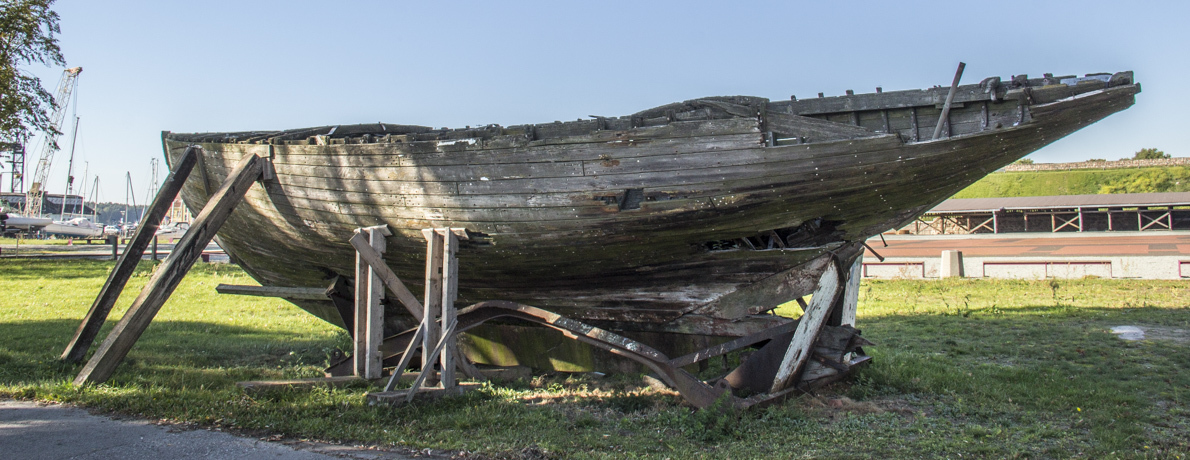
My first impression of the Lithuanian town of Klaipėda in was one of space, light and lovely buildings. This thriving port, the fourth largest, on the Baltic Sea has emerged from two major disasters, a great fire in 1854 and the devastation of the Second World War to become an attractive, interesting town with some unusual and unique attractions. I quickly discovered the popularity of sculptures here, particularly to mark its history and culture. Before the Republic of Lithuania was created Klaipėda and the surrounding area was an autonomous region known as Lithuania Minor (Mažosios Lietuvos) and subjected to a very turbulent history. Although unified with the rest of Lithuania in 1923 it still considers itself the heart of the country. The monument celebrating unification represents Lithuania Minor as a brown pole a part of the whole yet not wholly a part.
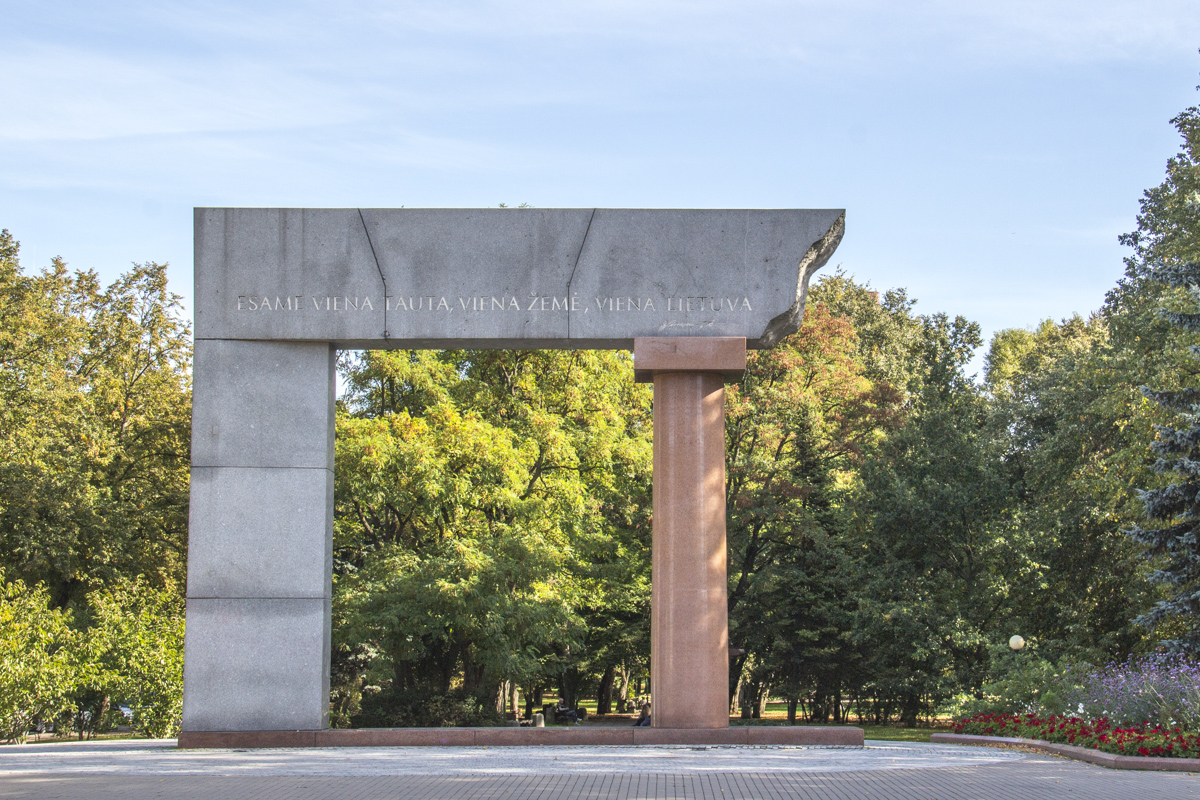
Unification Monument in Klaipėda
Soon after I set off to explore the old town I found some unique buildings in a small courtyard known as the Crafts Yard (Menų kiemas). Fachwerk architecture was popular at the beginning of the nineteenth century when the town was expanding rapidly. This method of construction, recumbent, upright and slanting wooden log carcasses filled with clay and bricks was popular for the construction of warehouses. Clusters of these buildings around the old town and near the port survived the great fire. They have been preserved and converted to different uses. Around the port these unique warehouses, usually two-storeys in height, have been converted into hotels and restaurants. In Crafts Yard they have become craft workshops where visitors are invited to touch, feel and learn about the spirit of past times by making local traditional goods themselves with the help of resident experts. Master classes, seminars and other events are regular features here.
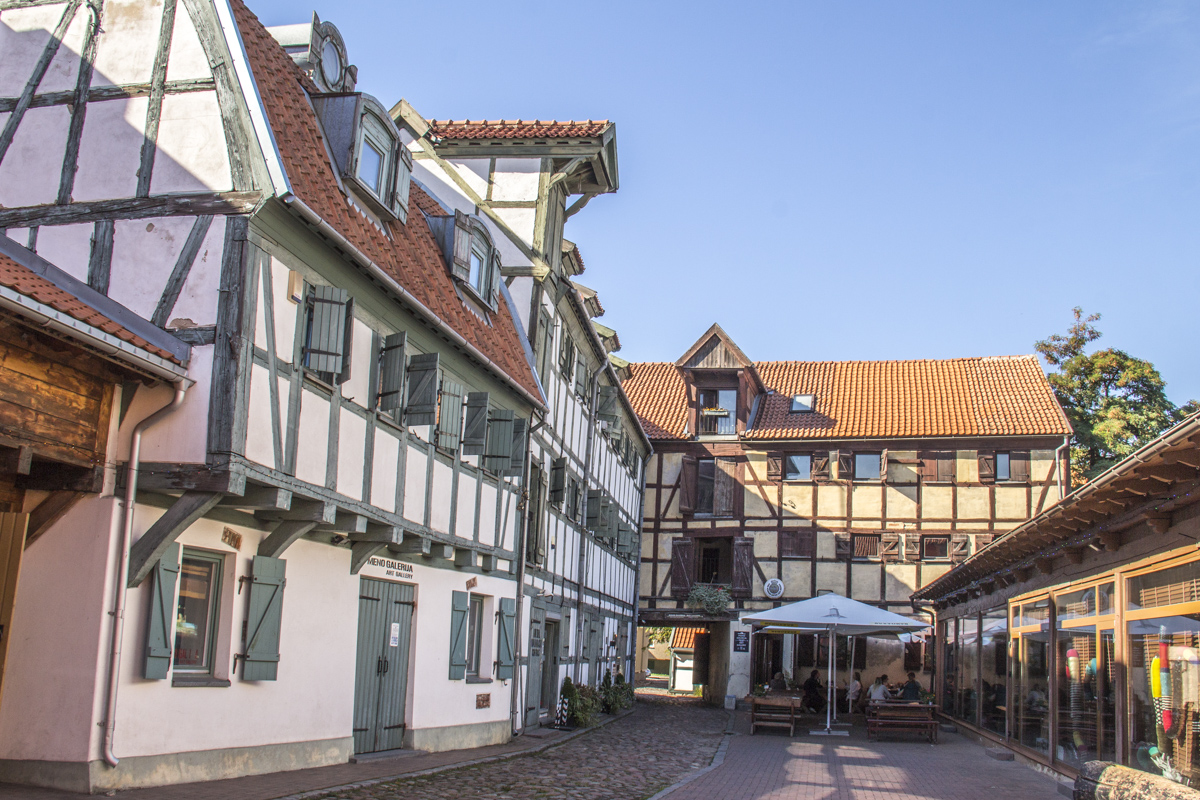
Crafts Yard in Klaipėda
Theatre Square is the centre of the old town. This large square which is popular as a venue for outdoor events and the ubiquitous amber stalls is dominated by the Drama Theatre. It is unknown how long there has been a theatre in this square but it is known that the revival of theatre life in Klaipėda began in 1818, with the arrival of the German Ulbrich, who set up a 200-seat hall and opened a theatre. The Drama Theatre that graces the square today was built in 1935. In 1990 a second theatre hall was built to support it. In front of this classical style building is a large fountain surrounding the statue of a woman perched on a column. This sculpture is known as Ann from Tharau (Taravos Anikė). It was created in 1912 by the Berlin sculptor, Alfred Kune and dedicated to Simon Dach a German poet who was born in Klaipėda and studied at Konigsberg University. Ann was a girl whom the poet fell in love with at first sight. But Ann was engaged to another man so Dach dedicated a poem to her and called it Ann from Tharau. The poem is still very popular in Germany, Austria and Switzerland. This statue disappeared during the Second World War and was reconstructed in 1990 on the initiative of the city inhabitants and emigrants. The statue was temporarily removed after the Germans annexed the town. It has been claimed that when Hitler gave a speech from the theatre’s balcony he became angry at having to address the back of a statue.
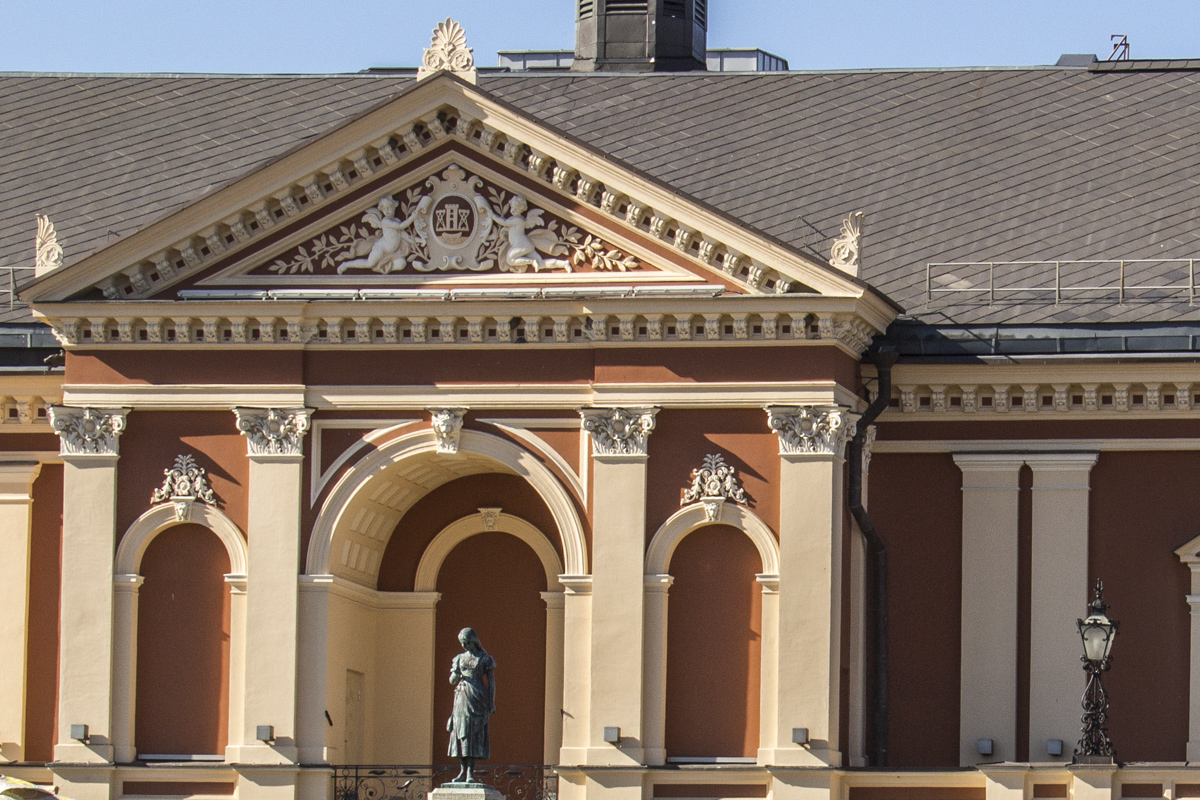
Statue of Ann from Tharau in front of the grand Drama Theatre in Klaipėda
A fascinating and unusual feature of the town is the Blacksmith’s Museum dedicated to the blacksmiths of Klaipėda have been well known since the sixteenth century. In the mid-nineteenth century the blacksmiths of the Klaipėda region began casting and making metal crosses and fences for graves all over the country. In 1895 Gustav Katzke, the famous blacksmith in Klaipėda founded his workshop and achieved fame by making artistic cemetery crosses, fences and gates. He won awards for his artistic blacksmithing. In 1944, as the Second World War threatened to engulf Klaipėda, he closed his forge and left for Germany. Post-war, in 1945, only a few dozen local people were left in Lithuania Minor. There was nobody to take care of the historical and cultural monuments of the town of Klaipėda and the surrounding area. A serious concern was the decay of Klaipėda town cemetery and its subsequent destruction in 1974. Fortunately, Dionyzas Varkalis, a blacksmith and metal restorer from Klaipėda, succeeded in saving some cemetery monuments which are now on display in the Blacksmith’s Museum. This museum was opened as a branch of the History Museum of Lithuania Minor in 1992. Varkalis was also involved in the establishment of Klaipeda‘s regional history museum in one of the oldest buildings in Klaipėda, built at the end of the eighteenth century.
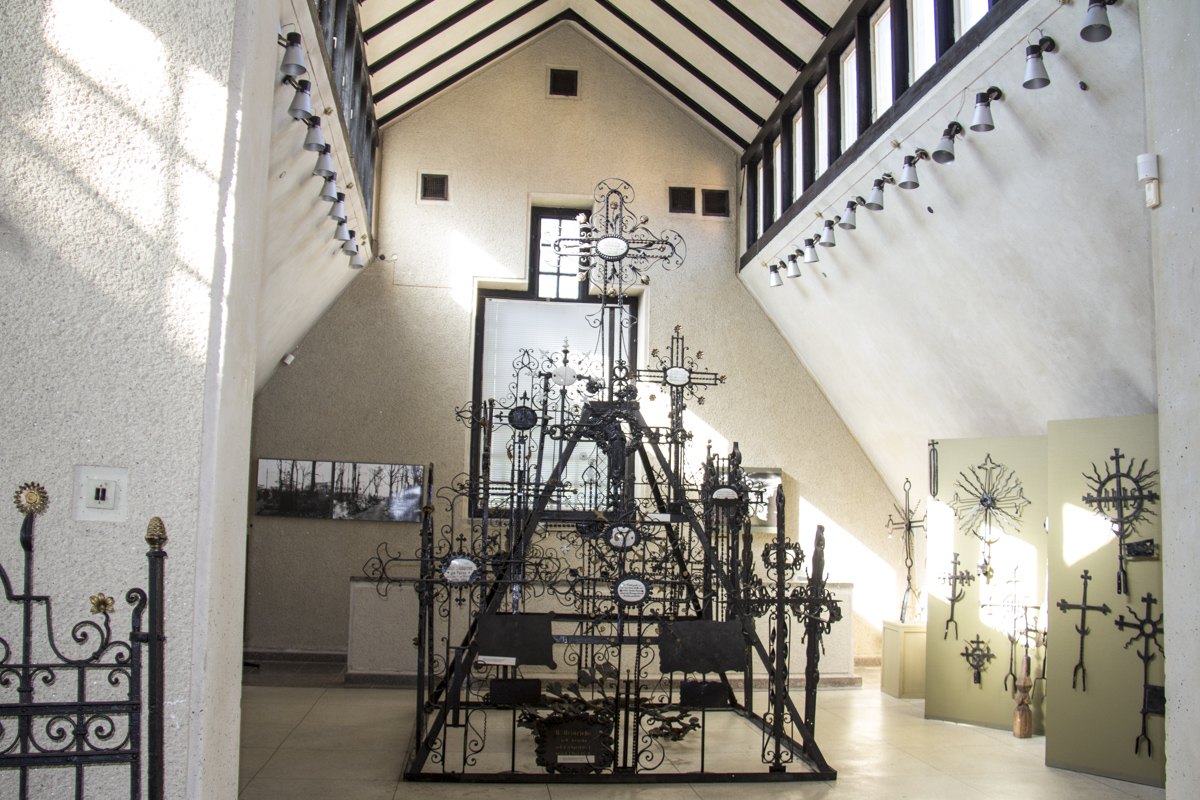
Blacksmith’s Museum in Klaipėda
Next to the museum is the old forge that belonged to Gustav Katzke. It was the discovery of this forge and the original equipment and tools of the old master by Dionyzas Varkalis that inspired him to restore the forge and create the museum. I met Dionyzas Varkalis, a spritely eighty-four-year old, in the old forge where he now concentrates on organising workshops to teach the art of blacksmithing.
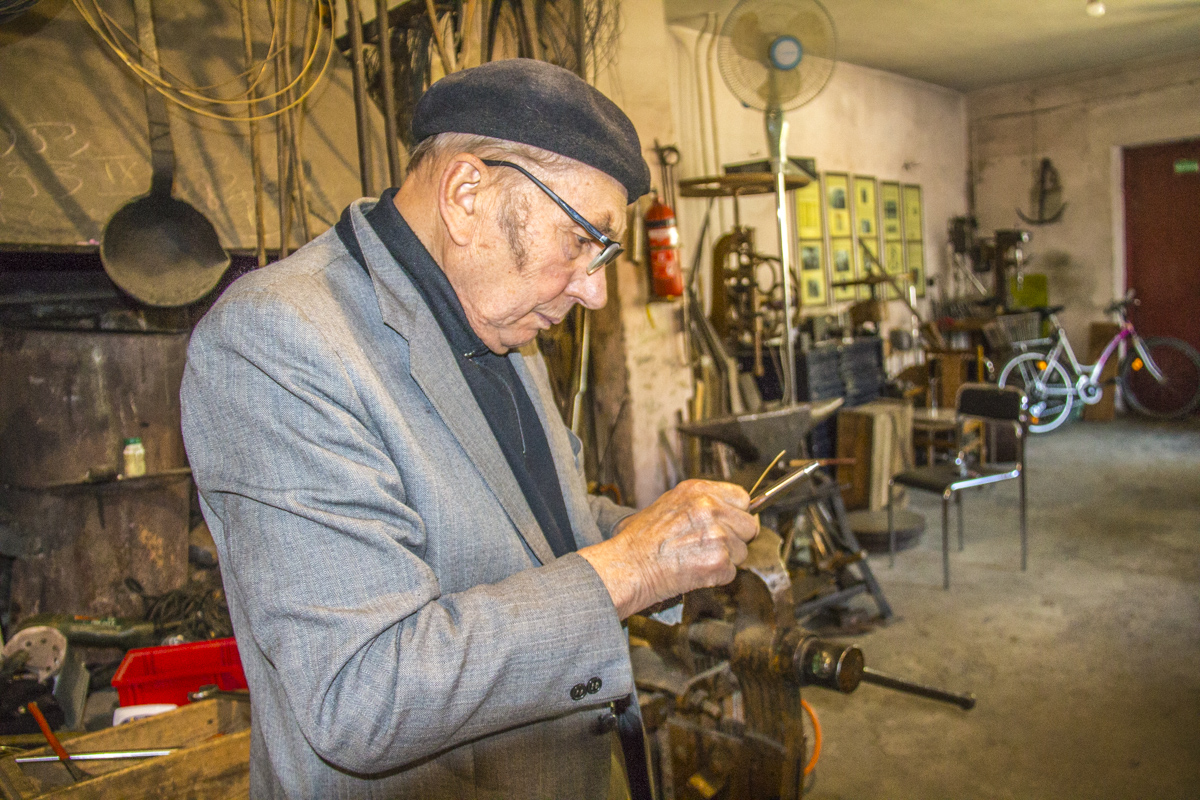
Dionyzas Varkalis at work in the forge at the Blacksmith Museum in Klaipėda
So keen was Dionyzas Varkalis to preserve the culture of his beloved Lithuania Minor he has also been involved in the establishment of three other museums in Klaipėda – the Clock and Watch museum, Pranas Domšaitis gallery and the Museum of 1939 to 1945 I visited the Museum of 1939 to 1945 which tells the story of the Second World War in Klaipėda. This very unusual museum has been established in a wall of the former Klaipėda castle, under the rampart, where during the Germans built a warehouse for explosives during the Second World War. This museum tells the story of Klaipėda city during the war – its devastation and the fleeing of all but a few dozen of its inhabitants. It has some unusual exhibits including the Memory Hall and a sculpture made from the remains of the churches that once stood proud in the town.
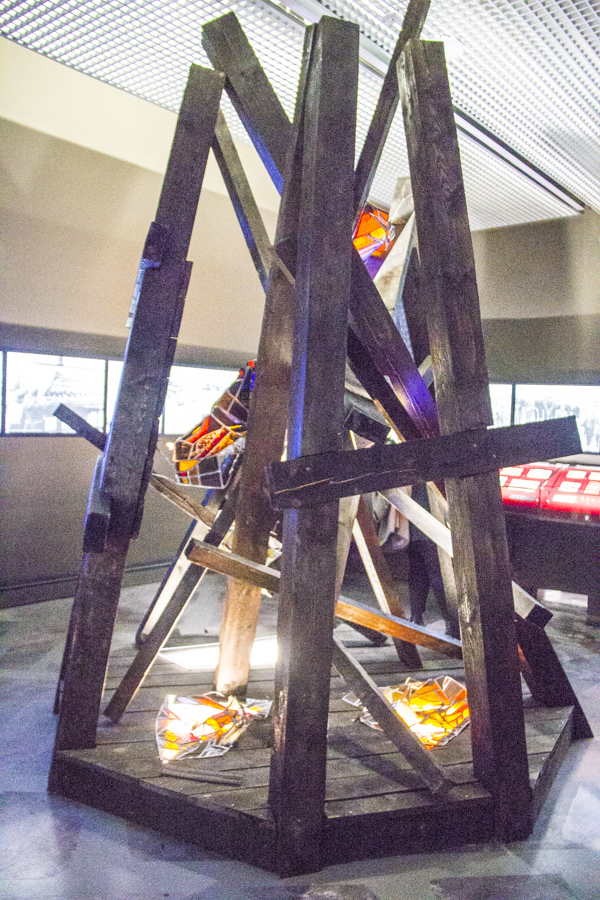
Museum 1939 – 1945 in Klaipėda
Klaipėda once boasted a series of coastal defences. One of them, the Nerija fort on the Curonian Spit in Smiltynė has been restored and converted to house the Lithuanian Sea Museum. The construction of this fort was started by the soldiers of the Kingdom of Prussia in 1864 and completed by the German Empire in 1871. Badly damaged during the Second World War it was restored during the 1970s and now houses a series of historical expositions and a large aquarium. It is the only aquarium between St Petersburg and Northern Germany and therefore very popular for educational visits. After taking the passenger ferry the Old Ferry port I was taken by the local bus to the Sea Museum where I was greeted by three Great White Pelicans sunning themselves on the bank of the moat that surrounds the old fort. The exhibits include both wet and dry tanks inside the aquarium and small exhibitions housed around the perimeter of the fort.
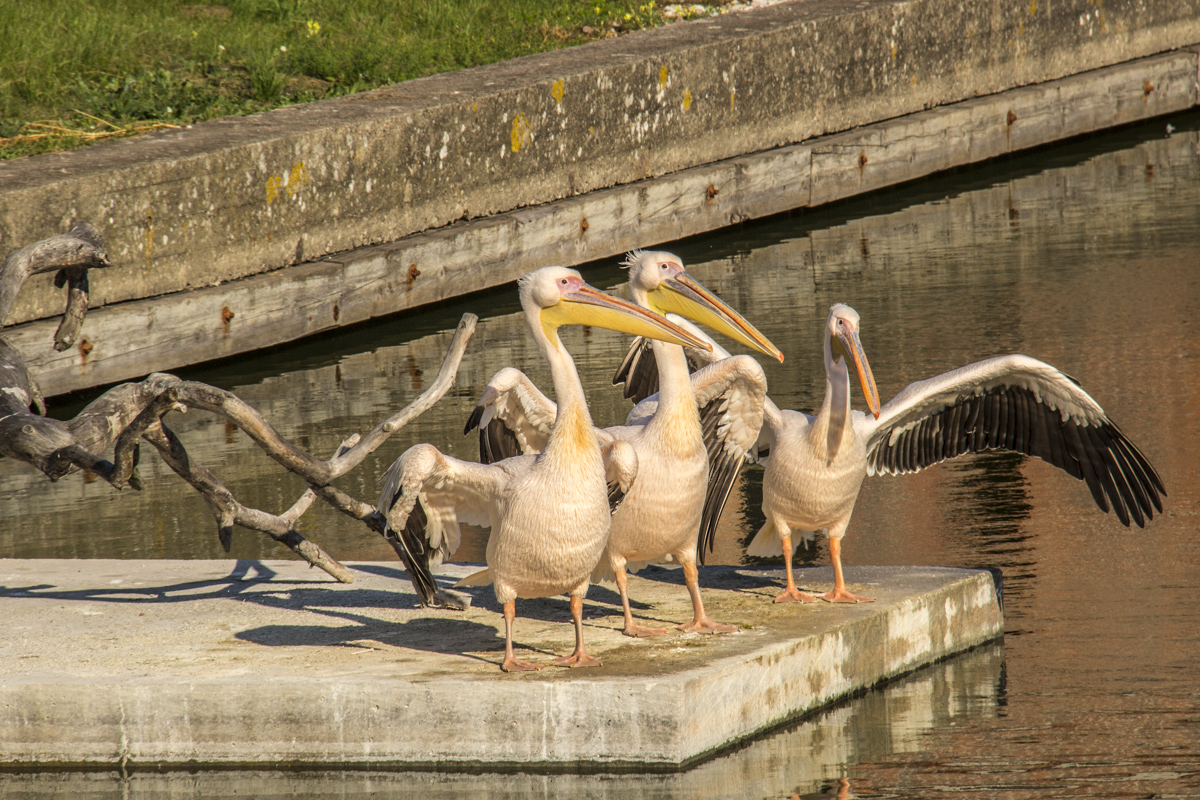
Great White Pelicans at the Sea Museum in Klaipėda
Back in the old town I discovered the very unusual and beautiful building that houses not only the Post Office but also a carillon bells in its tower. There are only two carillons in Lithuania and this one has become a symbol of the town which today hosts an annual carillon festival. I climbed the stairs up to this tower where I met one of Klaipėda’s two Carillonneurs, Stanislovas Zilevicius. The present carillon has forty-eight bells and was installed in 2006 after a visiting musician described the existing bells as rubbish. Fascinating though it was to watch Stanislovas Zilevicius thumping the large wooden blocks attached by wires to the bells above us I could understand why visitors are advised that the best place to appreciate the music is within the three-hundred metre area on the ground from which they can be heard. Concerts of bells are traditionally held every Saturday and Sunday at midday in the courtyard of the Clock Museum next door.
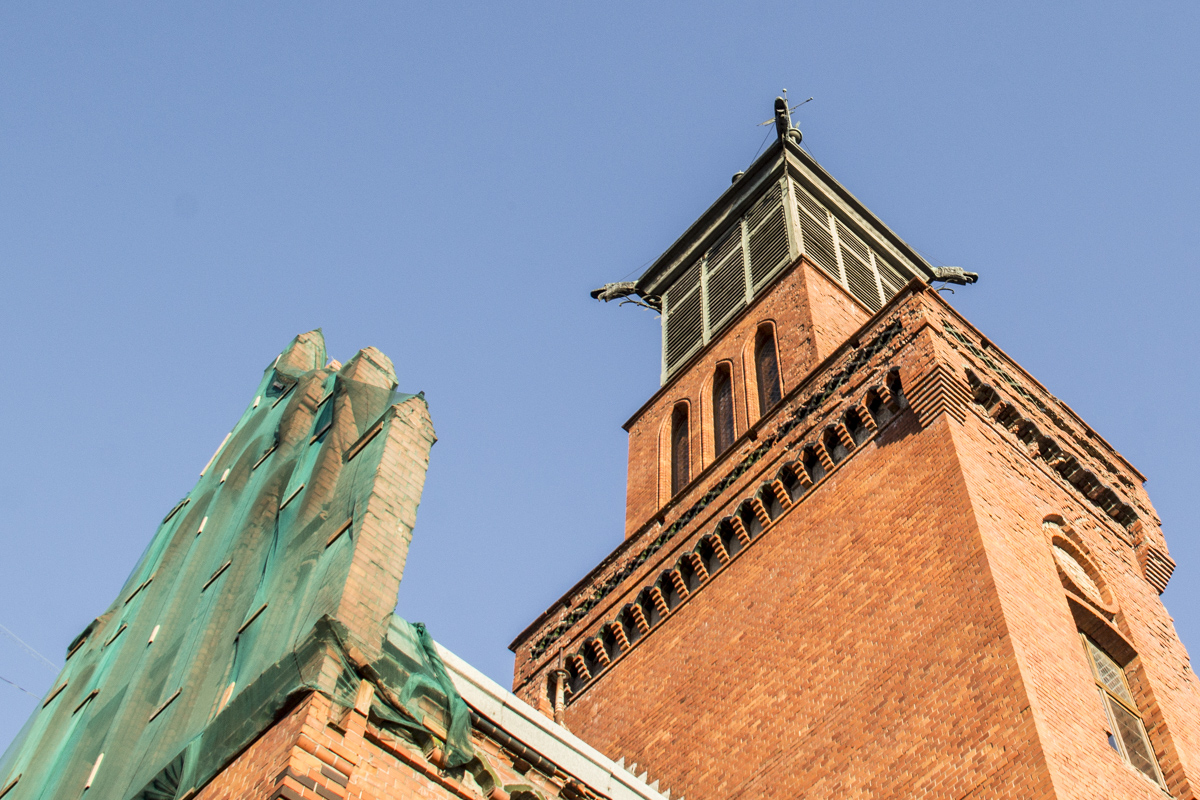
Tower of the Post Office building in Klaipėda
My final visit of the day was to the very large modern industrial building, Švyturys that was built for the Švyturys Brewery. The original brewery was established in 1784 by the Reincke family of merchant seamen. It is the second oldest brewery in Lithuania and today it is owned by the Carlsberg group and produces a wide variety of popular craft beers. Its new home as distinctive, symbolic features – tall arched windows and red bricks – a reminder of the town’s historical and architectural heritage. This building is divided into three parts, the production area that is separated from the beer café by a glass partition and the conference room and tasting area. Tours of the brewery must be pre-booked through the Tourist Information Centre.
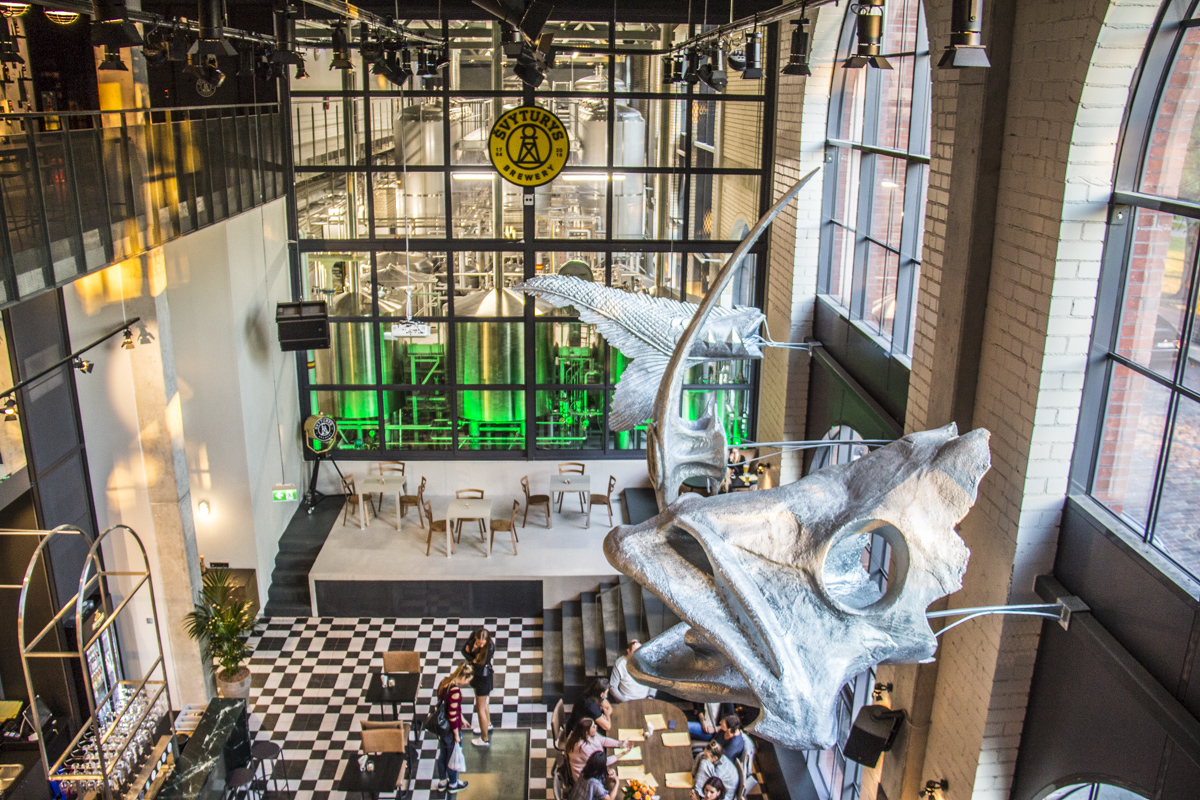
Beer bar and brewery at Švyturys Brewery in Klaipėda
It was a very pleasant end to my visit to Klaipėda, sitting in the bar in the tasting area above the bustling beer café savouring five different craft beers.
How to get there
I flew to Palanga from London Stansted with Ryanair and then got a taxi from Palanga to Klaipėda (29 km). There is also a local bus service between Palanga and Klaipėda. Air Baltic also offers flights to Palanga.
Where to Stay
I stayed at the Amberton Hotel a large, multi-storey hotel on the outskirts of the old town of Klaipėda old town and close to its Baltic port. The hotel has two large blocks and my room was in the K-Centre adjacent to the main building. I was very impressed with my room which was light and spacious with separate sleeping and sitting areas. The large window faced the sea and I had a spectacular view.
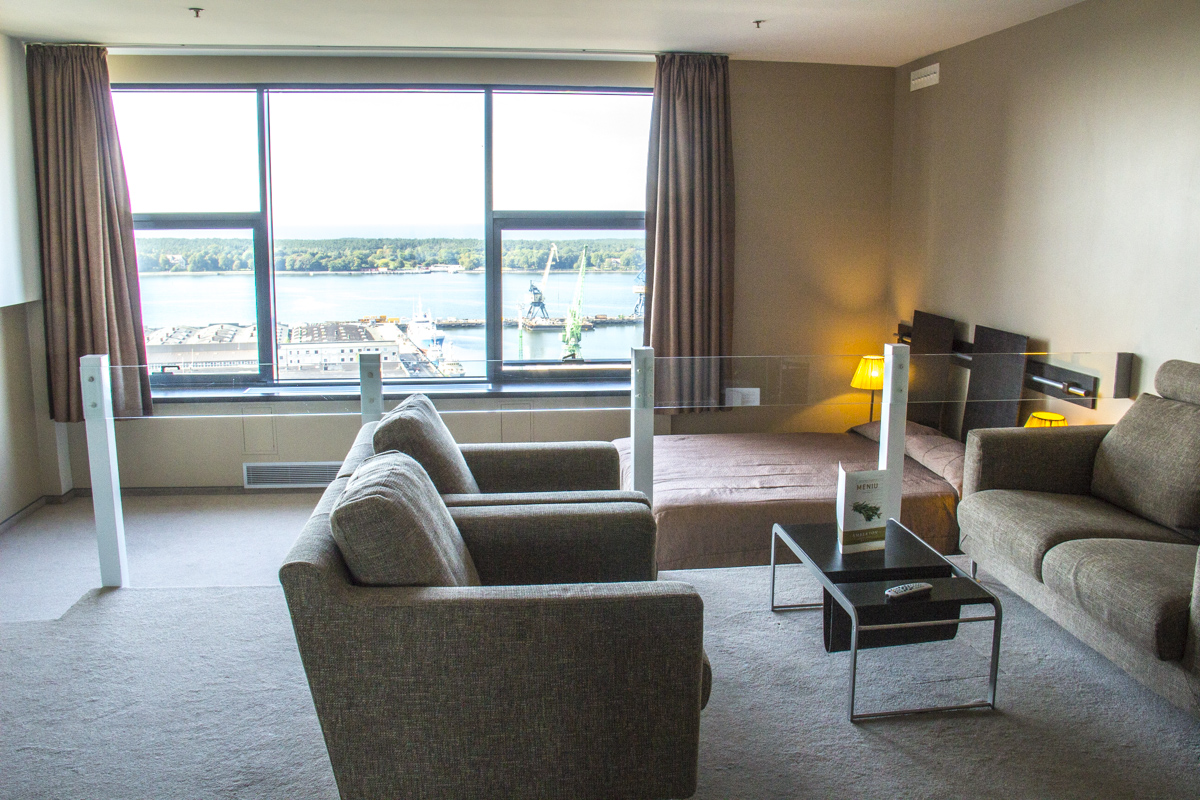
A bedroom in the K Block at the Amberton Hotel
This hotel is described as a city within a city and guests can choose which facilities to use (extra charges) and which of its three restaurants to eat in. There is also a very convenient coffee shop in the large reception area.
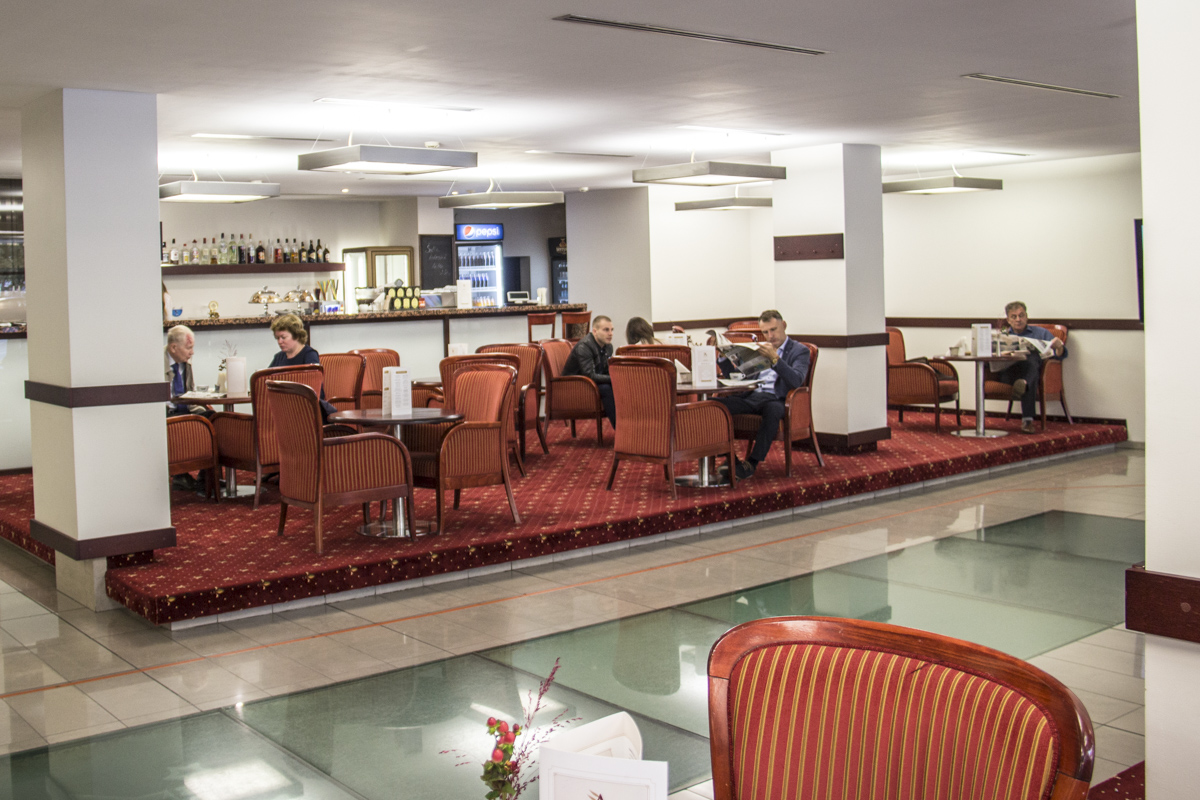
Coffee shop at the Amberton Hotel
For a city break it suited me very well and I enjoyed my stay there.
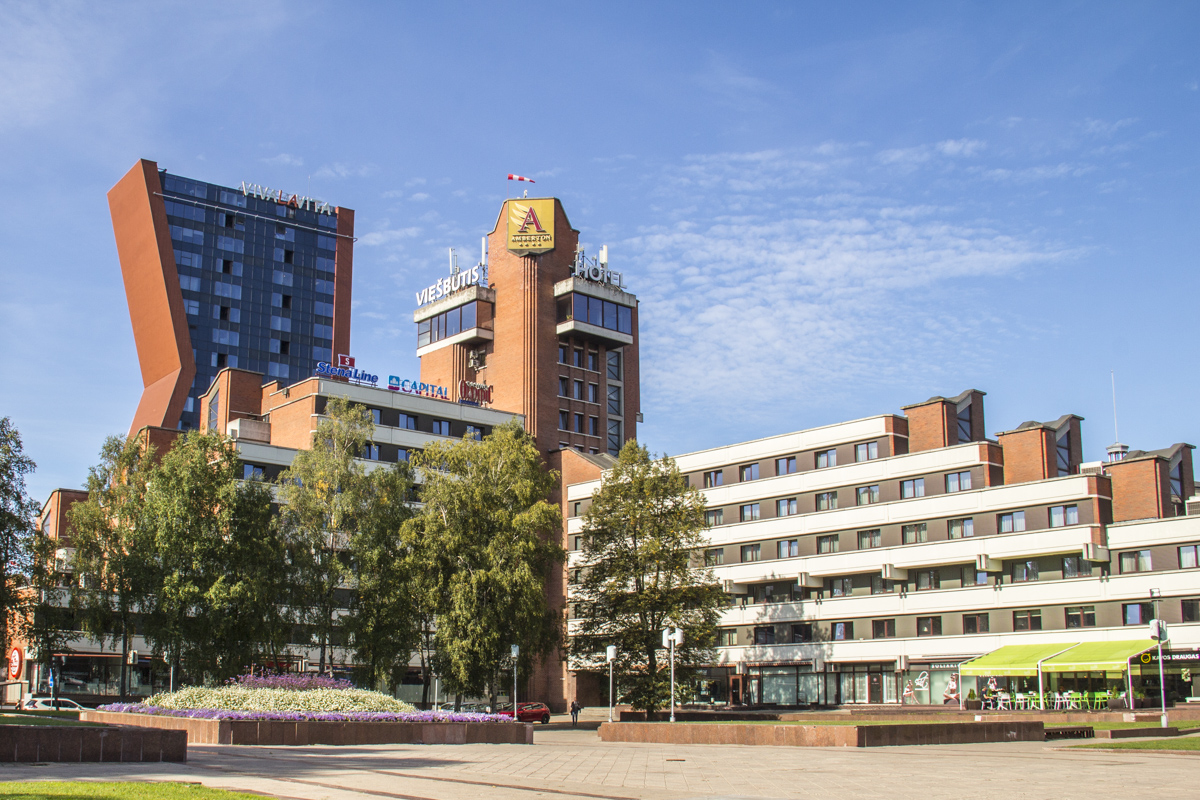
The Amberton Hotel in Klaipėda
Now Available on GPSmyCity.com
This article is now featured on GPSmyCity. To download this article for offline reading or travel directions to the attractions highlighted in this article, go to Walking Tours in Klaipeda on GPSmyCity
This article was based on the personal experience of Valery, an ExperiencedTraveller.